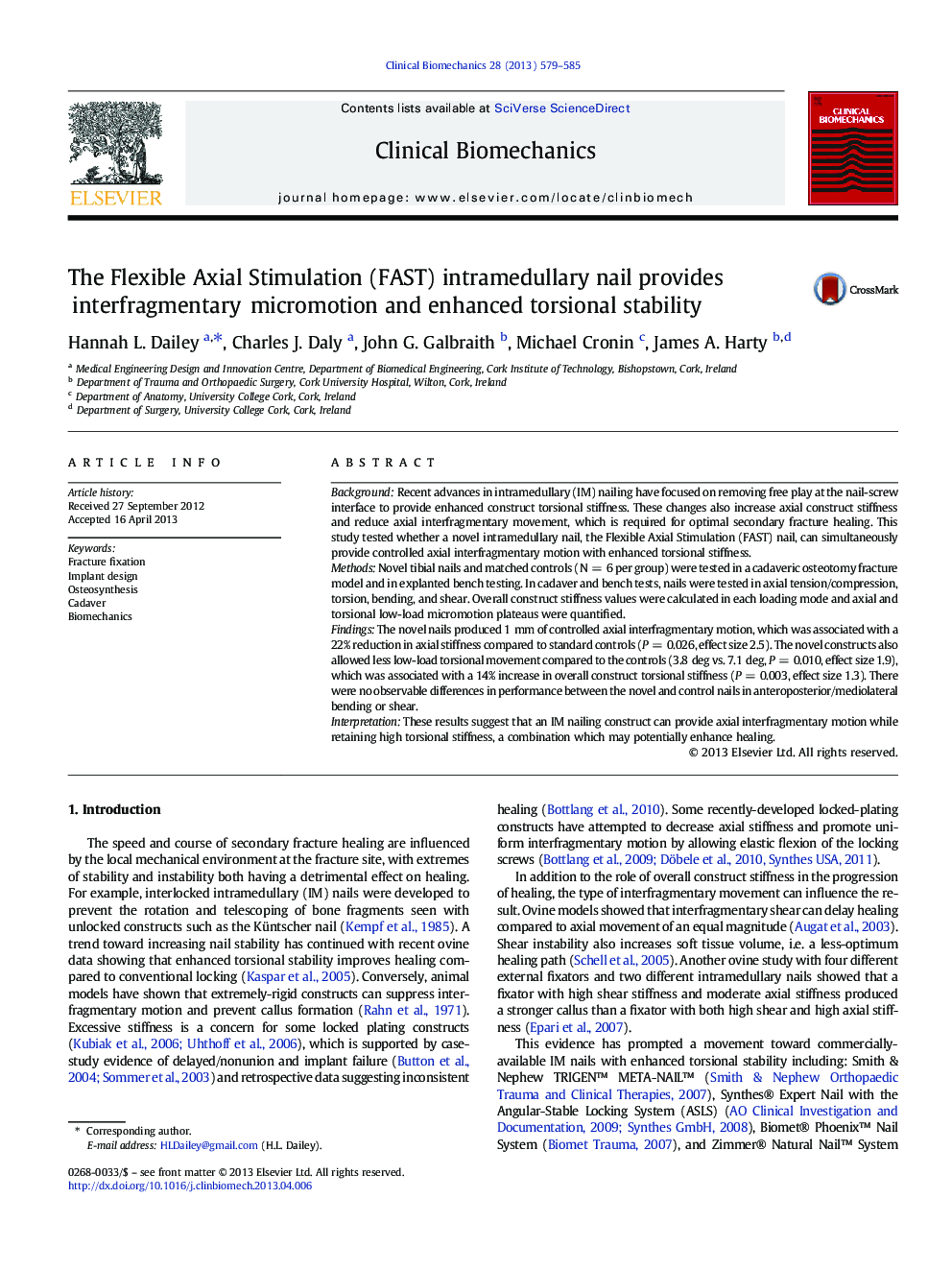| کد مقاله | کد نشریه | سال انتشار | مقاله انگلیسی | نسخه تمام متن |
|---|---|---|---|---|
| 4050708 | 1264952 | 2013 | 7 صفحه PDF | دانلود رایگان |

BackgroundRecent advances in intramedullary (IM) nailing have focused on removing free play at the nail-screw interface to provide enhanced construct torsional stiffness. These changes also increase axial construct stiffness and reduce axial interfragmentary movement, which is required for optimal secondary fracture healing. This study tested whether a novel intramedullary nail, the Flexible Axial Stimulation (FAST) nail, can simultaneously provide controlled axial interfragmentary motion with enhanced torsional stiffness.MethodsNovel tibial nails and matched controls (N = 6 per group) were tested in a cadaveric osteotomy fracture model and in explanted bench testing. In cadaver and bench tests, nails were tested in axial tension/compression, torsion, bending, and shear. Overall construct stiffness values were calculated in each loading mode and axial and torsional low-load micromotion plateaus were quantified.FindingsThe novel nails produced 1 mm of controlled axial interfragmentary motion, which was associated with a 22% reduction in axial stiffness compared to standard controls (P = 0.026, effect size 2.5). The novel constructs also allowed less low-load torsional movement compared to the controls (3.8 deg vs. 7.1 deg, P = 0.010, effect size 1.9), which was associated with a 14% increase in overall construct torsional stiffness (P = 0.003, effect size 1.3). There were no observable differences in performance between the novel and control nails in anteroposterior/mediolateral bending or shear.InterpretationThese results suggest that an IM nailing construct can provide axial interfragmentary motion while retaining high torsional stiffness, a combination which may potentially enhance healing.
Journal: Clinical Biomechanics - Volume 28, Issue 5, June 2013, Pages 579–585